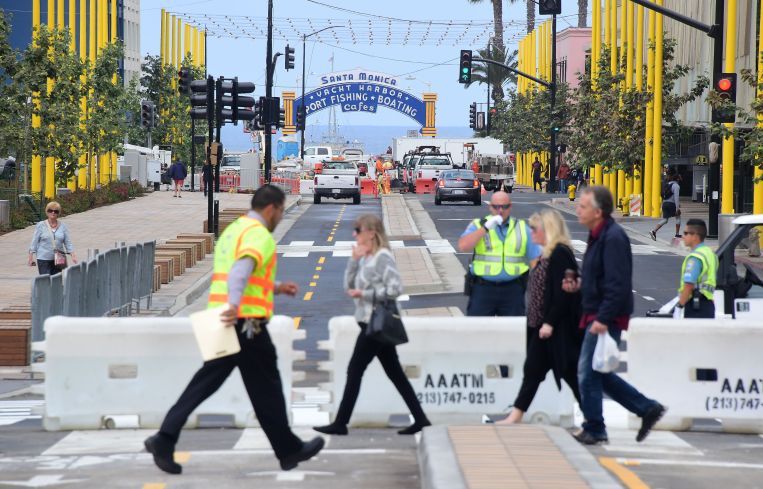Santa Monica Temporarily Bans SROs and ELI Incentive
By Alison Stateman March 30, 2019 12:20 am
reprints
The Santa Monica City Council has put the brakes on two forms of affordable housing that have become overrepresented in the coastal city’s Downtown district at a City Council meeting on Tuesday. First, the council voted unanimously 6-0 to enact an emergency ordinance banning market-rate micro-units, defined as apartments smaller than 375 square feet, for 45 days. (The Santa Monica City Council is made up of six members and Mayor Gleam Davis.)
The ban, which will go into effect immediately until May 10, will apply to the six buildings local developer WS Communities wants to build, but will not impact either 100-percent affordable projects or others that already have building permits in Santa Monica.
The temporary ban will give city leaders a chance to create a permanent measure to address the overabundnance of market-rate micro-units in Downtown Santa Monica.
The housing type, also known as single-room occupancy, or SRO, has been viewed as a way to increase density near mass transit and to provide housing at lower rents. According to Curbed LA, at one point, Santa Monica city planning staffers predicted that 80 percent of SROs in the district would be deed-restricted for low-income tenants.
However, plans filed in July by WS Communities to build 363 SRO units across six buildings in a four-block radius in downtown Santa Monica, in which only 5 percent of the units would be set aside for renters with extremely low incomes, raised concerns among civic leaders about both the lack of affordable options and housing stock mix.
“I believe SROs are a valid part of the mix but my concern is creating six whole new buildings of them,” said City Councilman Kevin McKeown. “It would be irresponsible of us not to take some action given what this could say for the housing balance Downtown. An interim ordinance will give us time to take a step back and take a breath.”
Following the vote was a lengthy debate over an disproportiately large number of affordable housing created in the “extremely-low income” (ELI) category. Current rules outlined in the Affordable Housing Production Program (AHPP) have incentivized developers to include the smallest number of affordable units—albeit for extremely-low-income tenants—possible, as the Santa Monica Daily Press reported on Monday.
Proposition R, passed by voters in 1990, requires that all new multifamily housing be affordable, but an option adopted by the city in 2012 in which developers could build less units for those households designated as extremely-low-income (households making less than 30 percent of the Los Angeles’ median income) has led to a projected overall affordable housing shortfall of 5 percent. Depending on project size, developers can set aside just 5 to 7.5 percent of units for extremely-low-income households. The amount rises to 10 to 15 percent for those making 50 percent of the median income or 20 to 30 percent for households making 80 percent of the median income.
Cities, like Santa Monica, are under increased pressure to meet affordable housing goals following the election of Gov. Gavin Newsom, who said that he wanted developers to build 3.5 million homes from the time he took office through 2025. The governor has shown he means business when it comes to creating housing, going so far as to sue the city of Huntington Beach in January for failing to set aside sufficient land for new residential development as outlined by state law, as the Los Angeles Times reported.
Peter James, A principal strategic planner for the City of Santa Monica, said the result is that as of 2018, ELI units made up 46 percent of all affordable housing in the city, while zero was created for those with moderate or low incomes, defined by the city as households whose annual income is not more than 100 percent of the area median income (AMI), and household makes less than 60 percent of AMI, respectively.
While Davis said at this week’s meeting that she was worried that removing the incentive, even temporarily, might have a “chilling effect” on the creation of affordable housing, McKeown eventually won her over.
“Sometimes we get our marching orders from the voters, who wanted not less than 30 percent of affordable housing to be for low- and moderate-income [households],” McKeown said.
Following a lengthy debate, the council decided by a vote of 5 in favor and 1 opposed to temporarily remove the ELI option for the next eight months. In that time, city staff will examine the impact of removing the incentive and thus determine how to amend city policies, including those related to tax credits for private and city affordable housing development.



